In May 2020, a deal was finalized to transfer ownership of the Egyptian Theatre in Hollywood (a.k.a. Grauman's Egyptian) from the non-profit American Cinematheque to the very much for-profit streaming service (and now film studio) Netflix.
And it caused quite an uproar.
Because when the City of LA's Community Redevelopment Agency sold the Egyptian to American Cinematheque in 1996—for just $1, a symbolic transaction—it was so that the historic property could be made accessible for the public good.
To complicate matters, one of the American Cinematheque board members at the time worked for Netflix.
Now, I don't know what American Cinemetheque's bylaws state in reference to potential conflicts of interest. It may be that the board reviewed the situation and decided that the possible interested person didn't stand to gain anything financially by the transaction, and so it wasn't an actual conflict of interest.
But it seems as though A.C. may not have even had the right to sell the property at all—much less transfer it to a corporation that would use it for private gain.
Sure, the streamer will still allow the non-profit to occasionally screen repertory cinema and festivals; but it will primarily use the theatre as a screening room for its original productions.
How did Netflix get around the Supreme Court decision of 1948 (known as the "Paramount Act," the "Paramount Decision," and the "Paramount Decree") that forbade movie studios from owning their own movie theatres and booking their own films there, as a violation of anti-trust laws?
The same year that Netflix bought the Egyptian, the U.S. Department of Justice motioned to lift the ban—and a judge granted the motion.
The anti-trust regulation of movie theatres was terminated—which means studios can once again legally own their own movie houses and monopolize the market, potentially edging out smaller chains and independent-run cinemas.
It's a funny thing, a digital-first platform turning to brick-and-mortar—much like Amazon.com opening real-life grocery stores. (Or Amazon Studios taking over the Pacific Culver City multiplex for Prime screenings last December.)
They've both already cannibalized mom-and-pop retail by shifting consumer behavioral patterns online—so moving to physical locations feels a little like they're turning the knife.
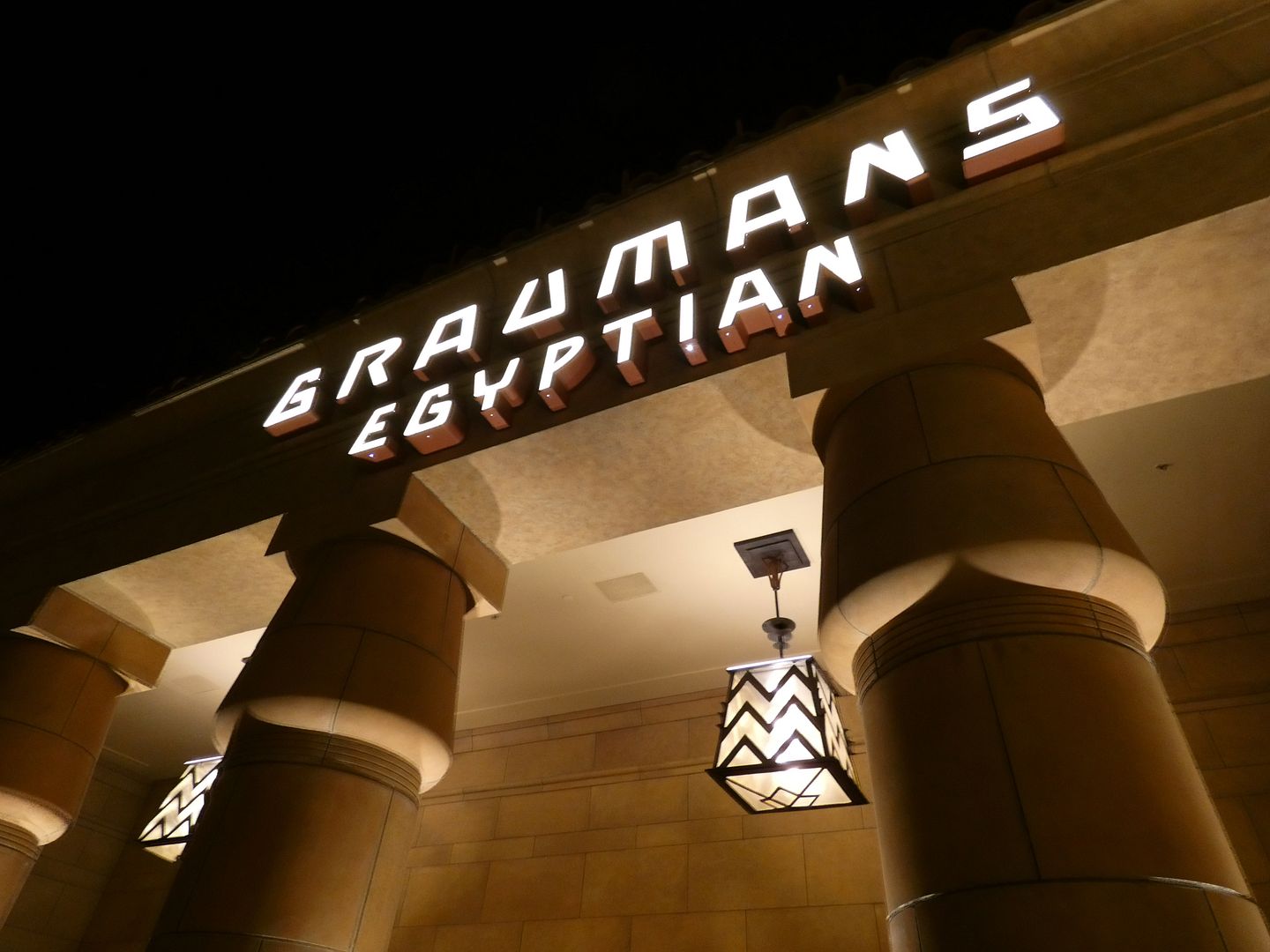
I appreciate that Netflix wanted to take over and preserve an existing, historic theatre rather than building something anew (or, gasp, tearing something down in the process). So, I had to put all this drama aside for myself—because in the end, no matter who owns it, the Egyptian is a 101-year-old Hollywood landmark. I want to support it; I want to help it stay open and active; I want to experience it.
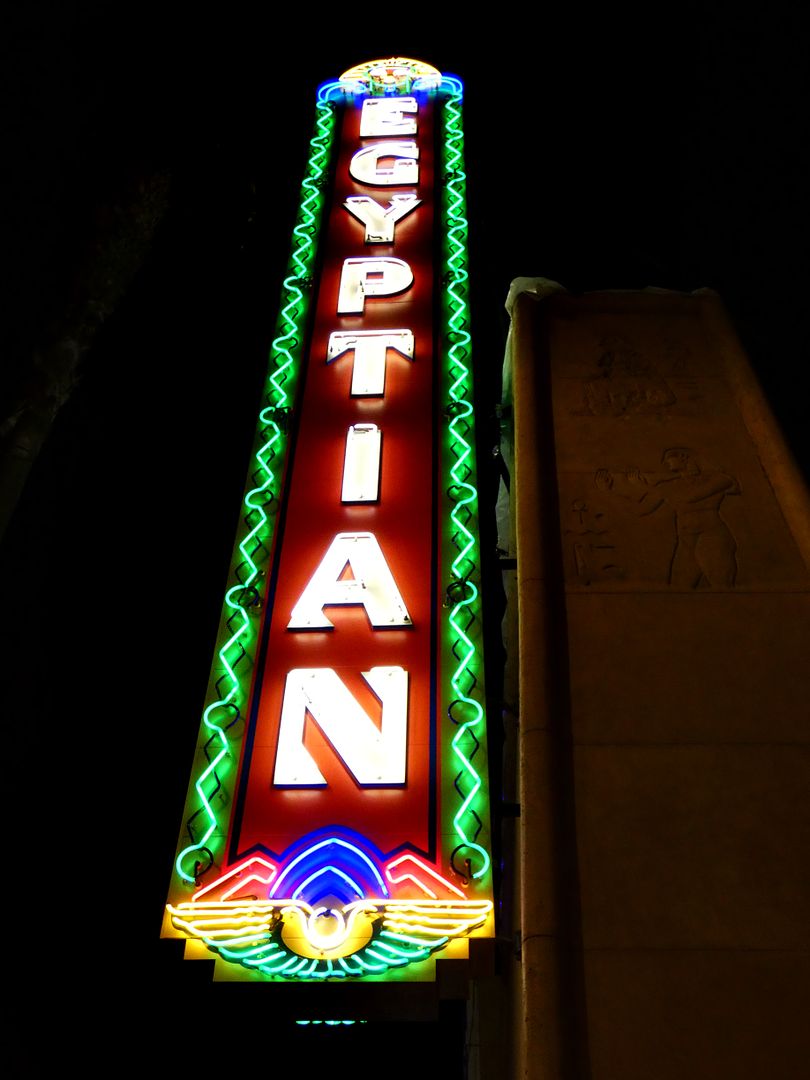

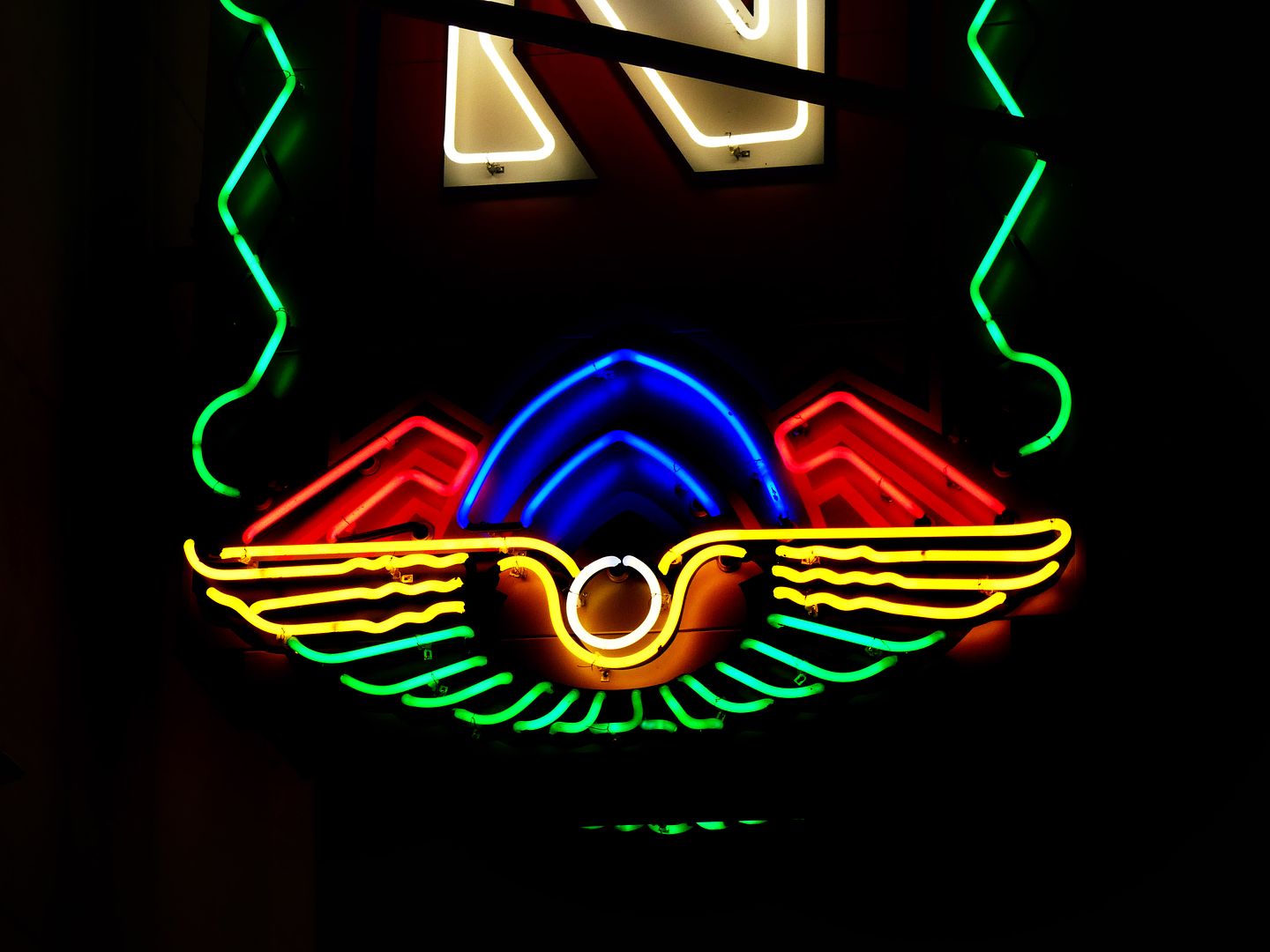
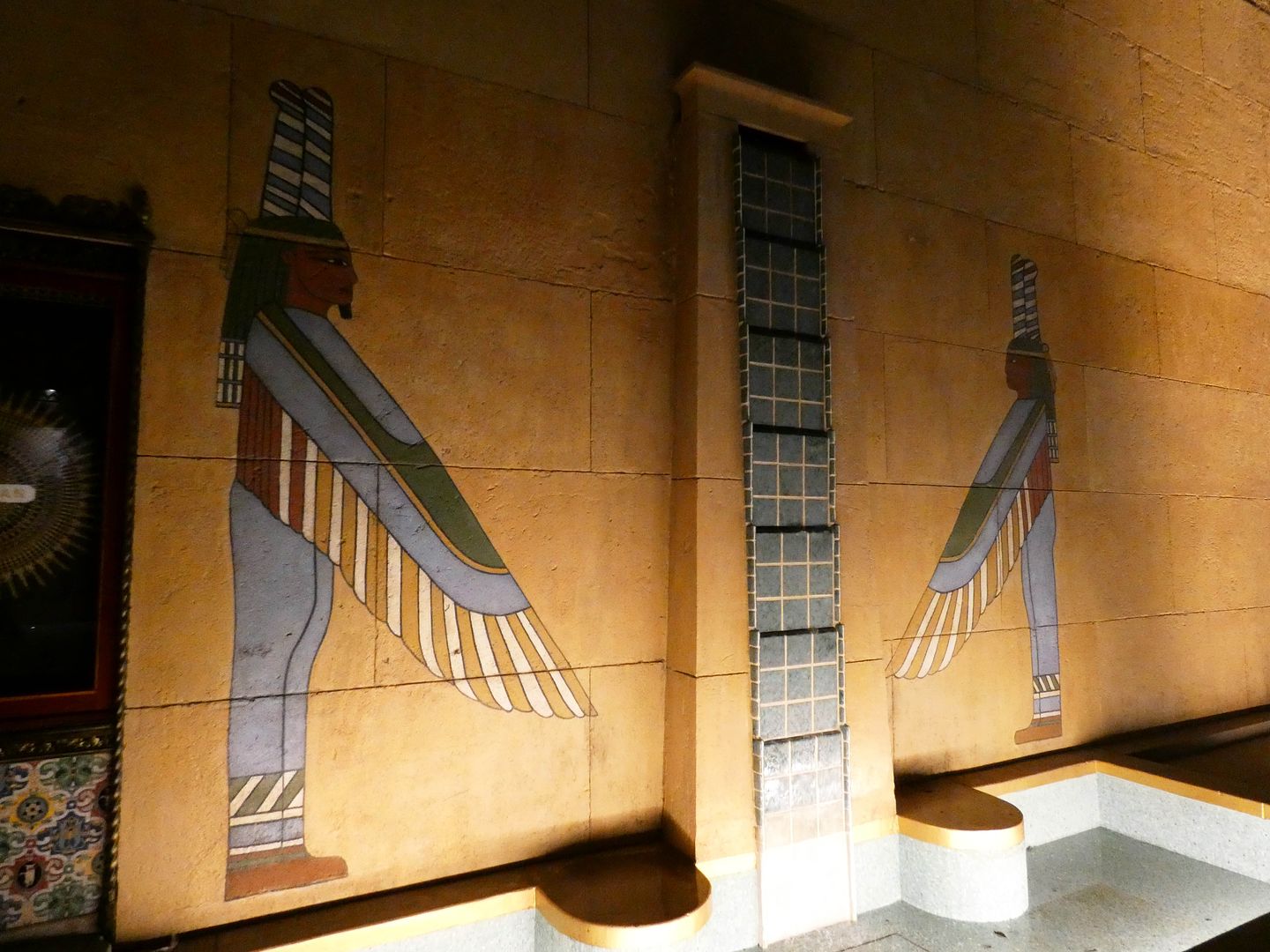
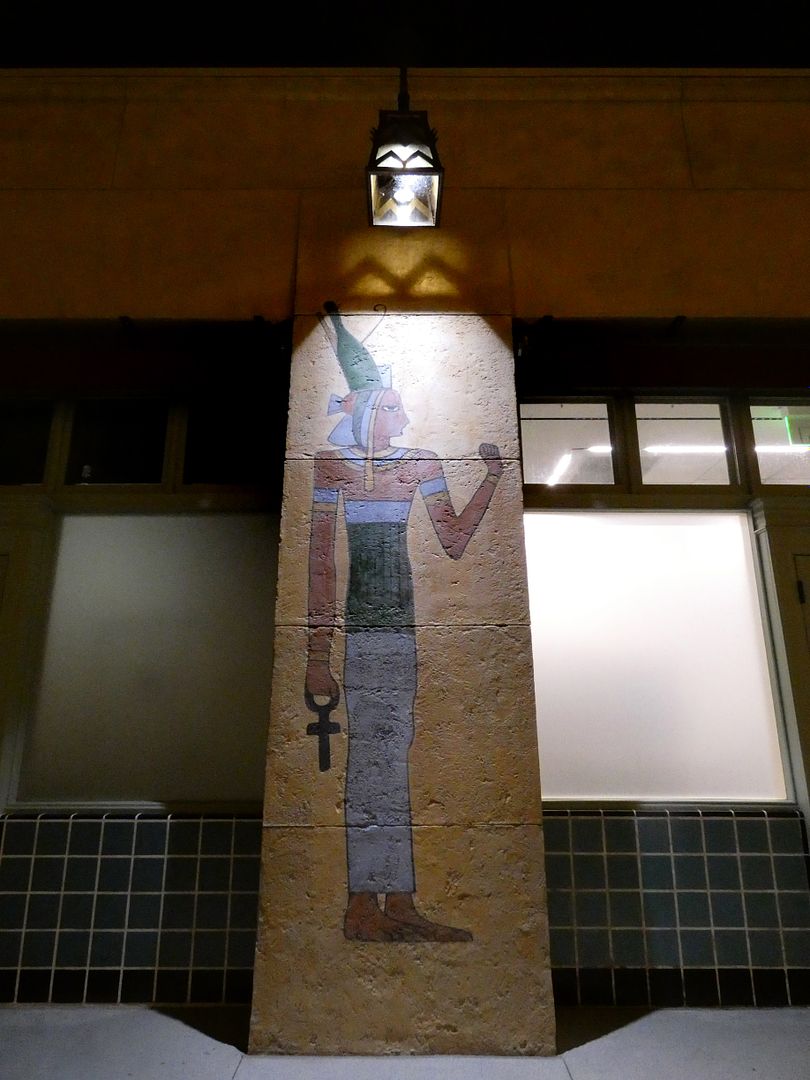
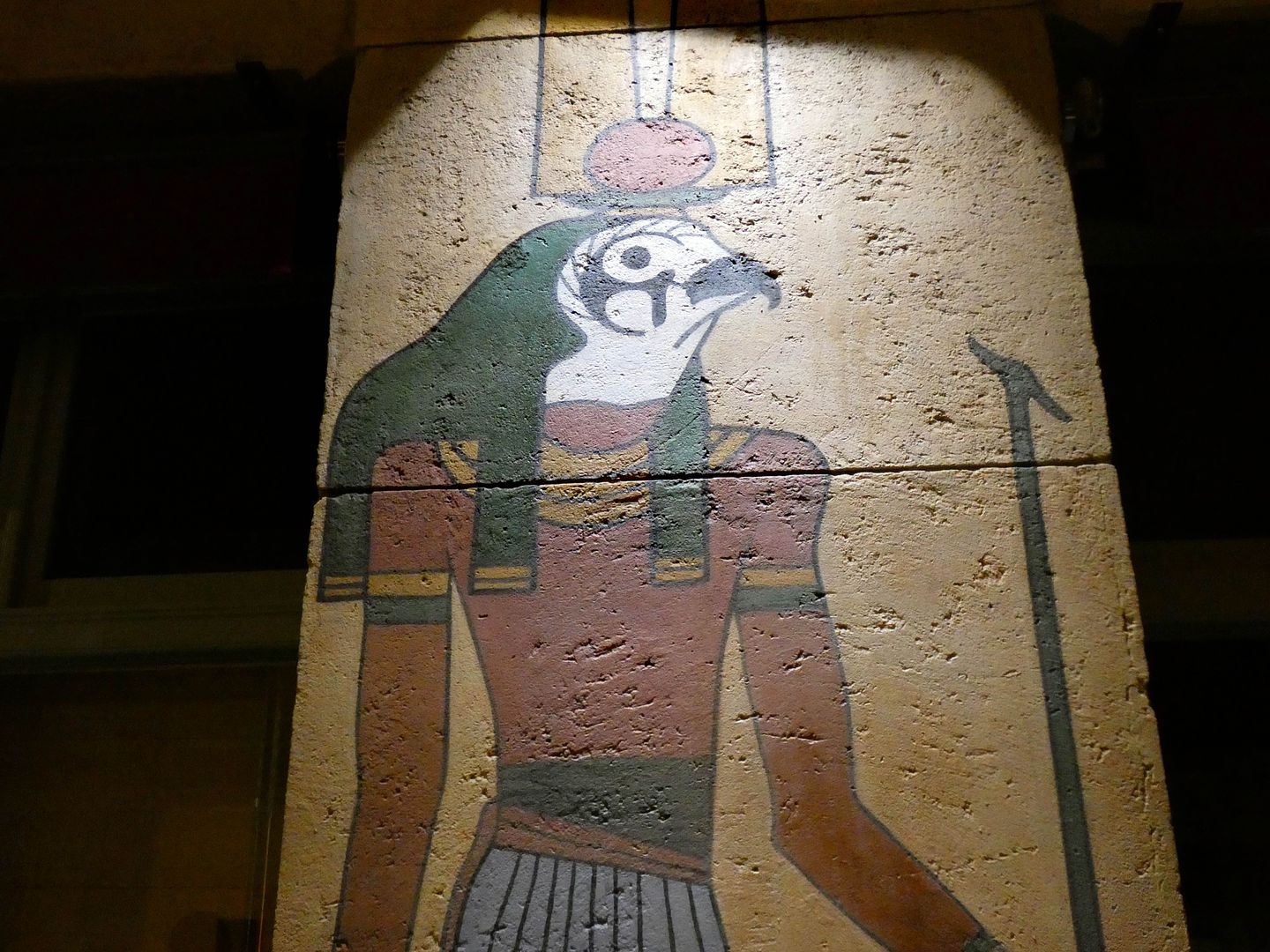
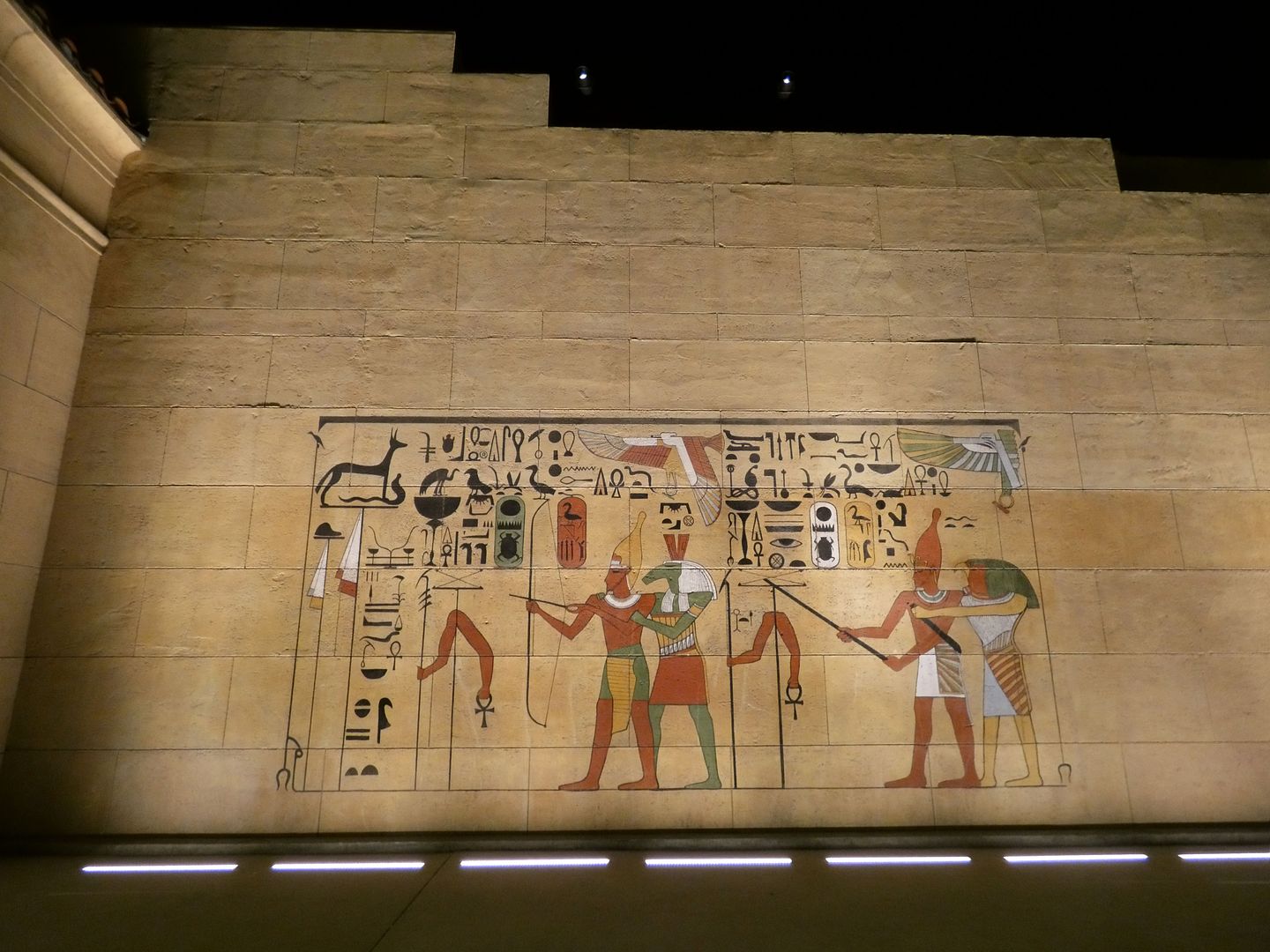
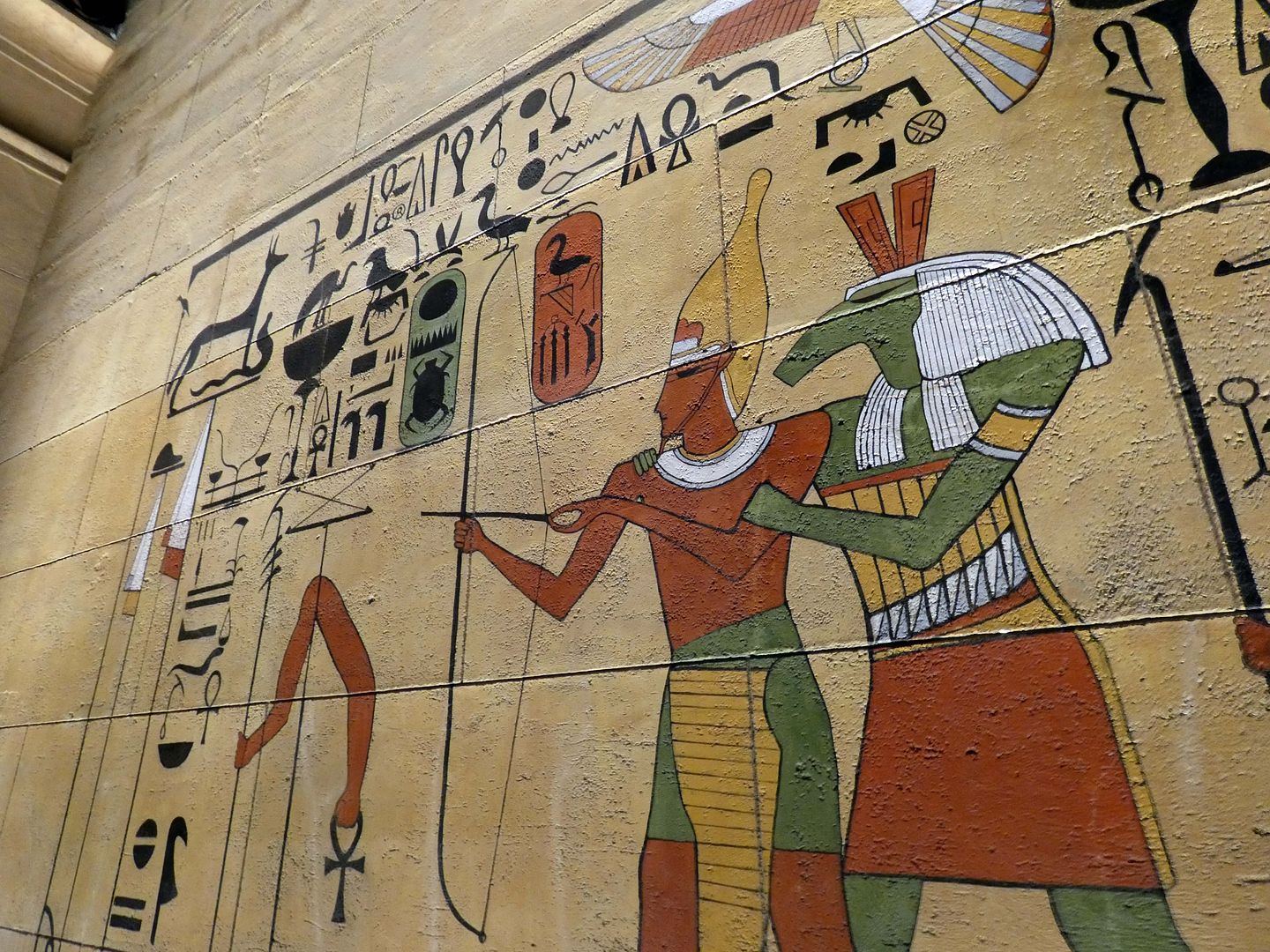
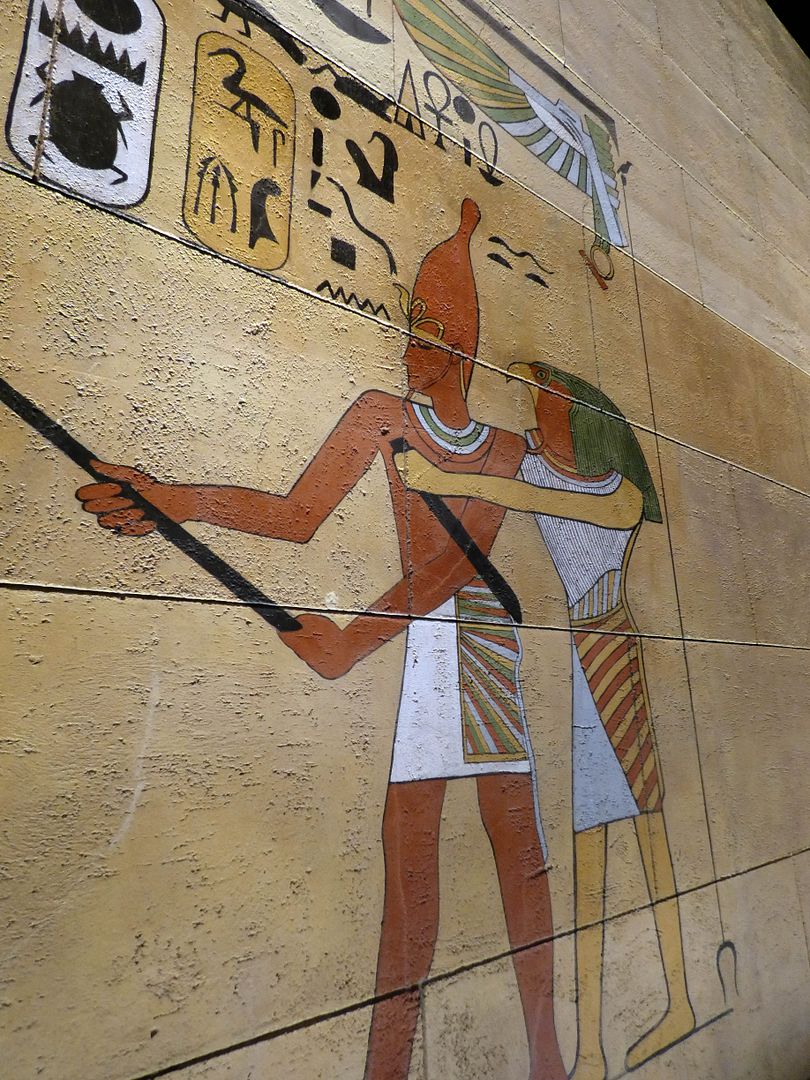
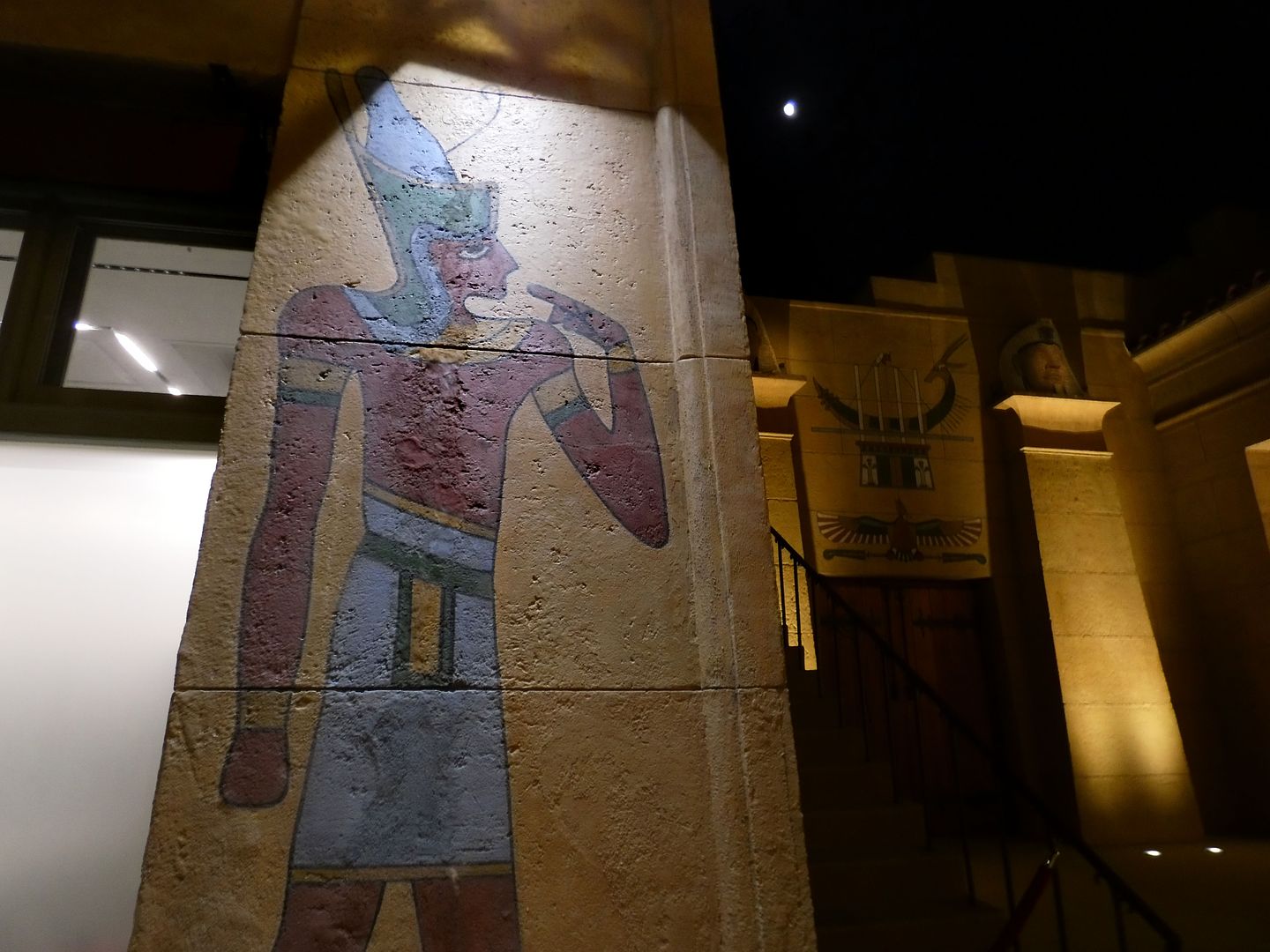
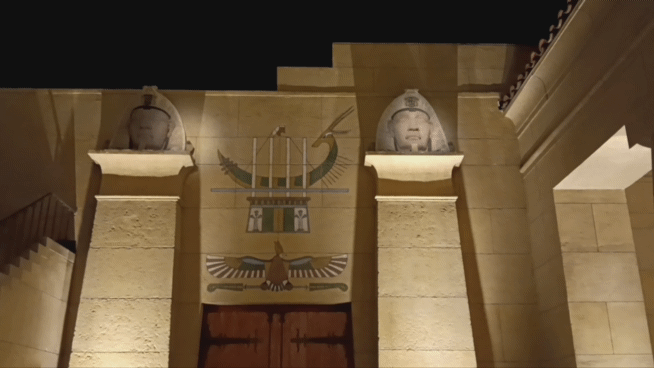

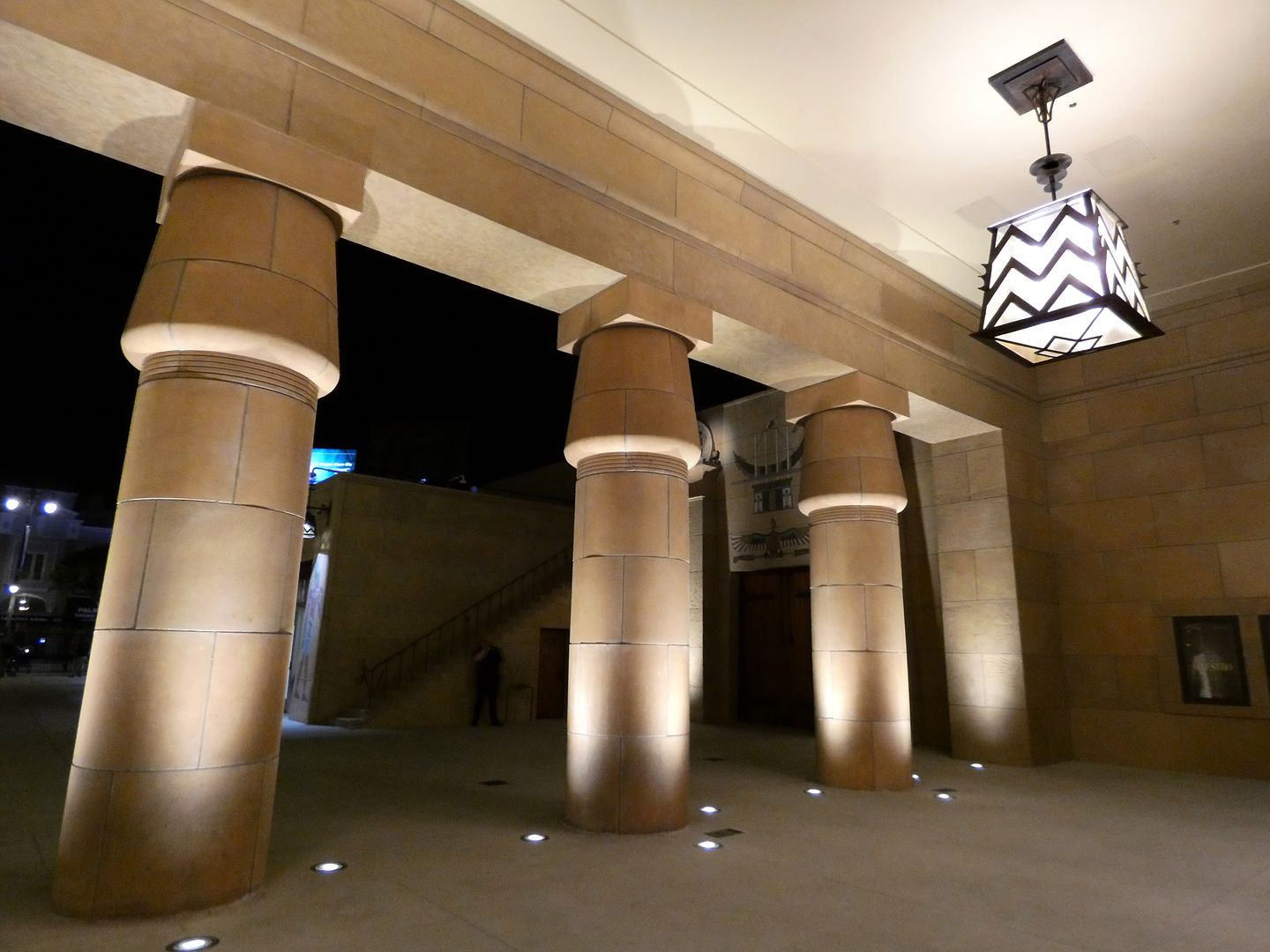
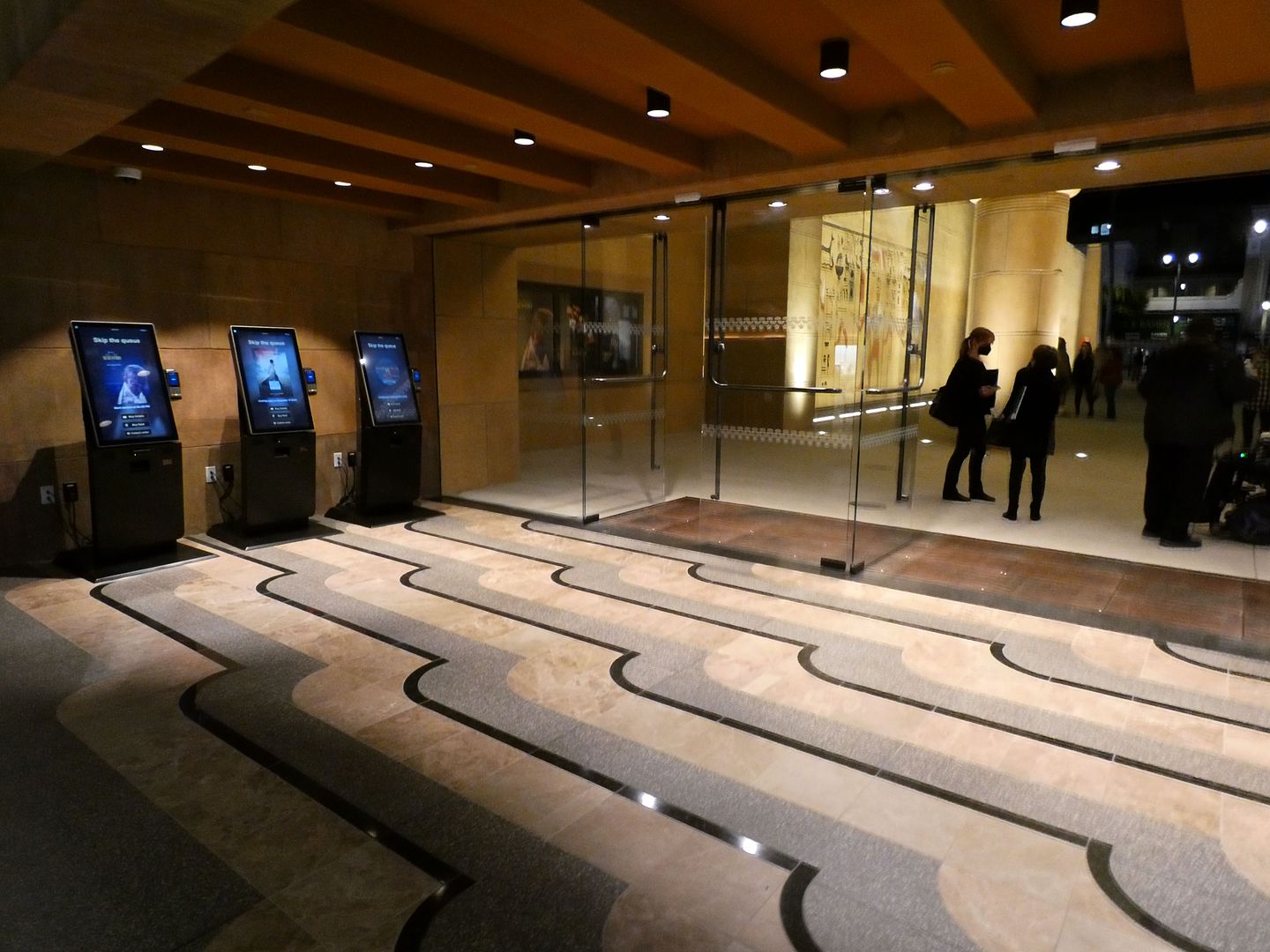
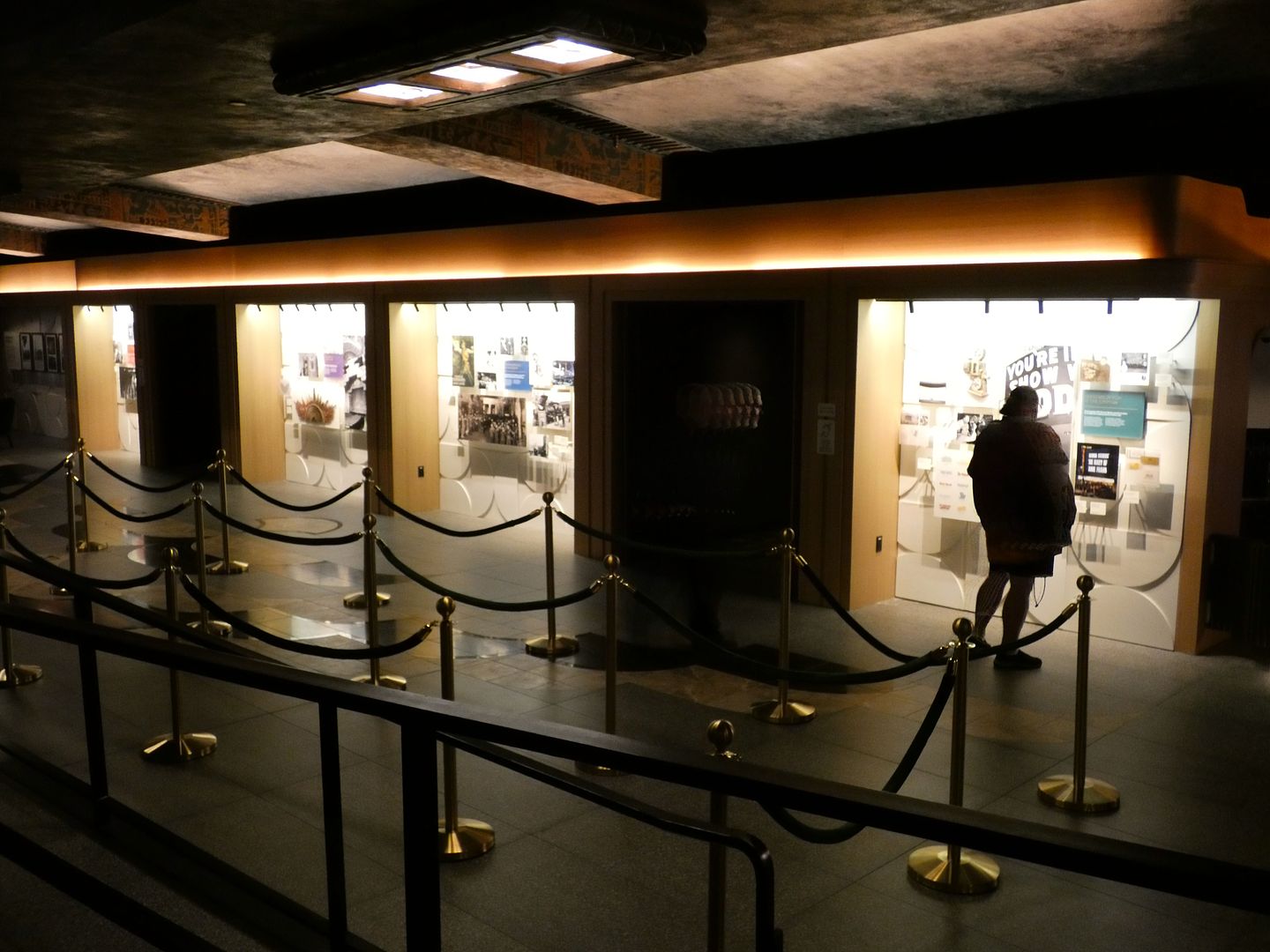
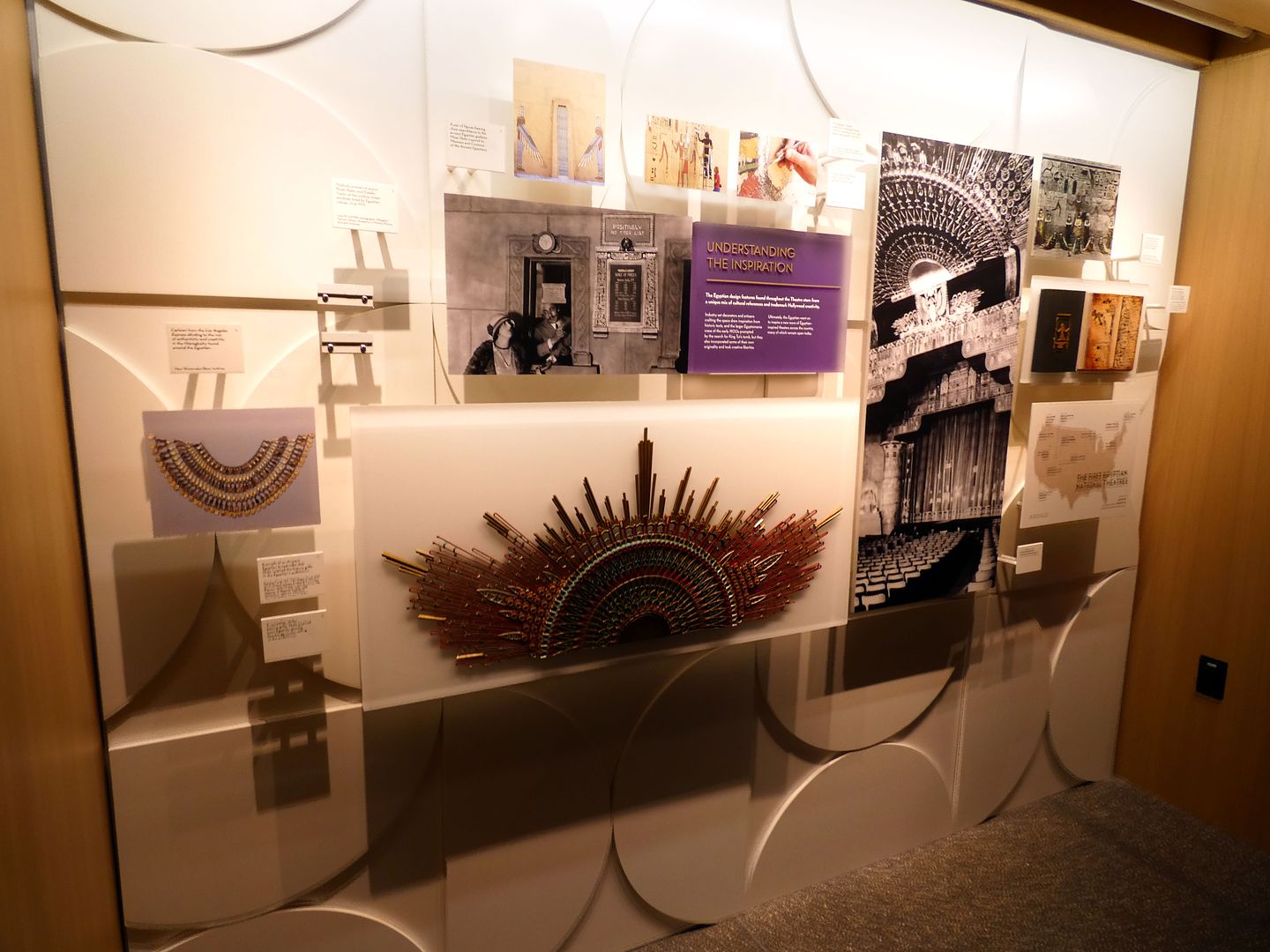
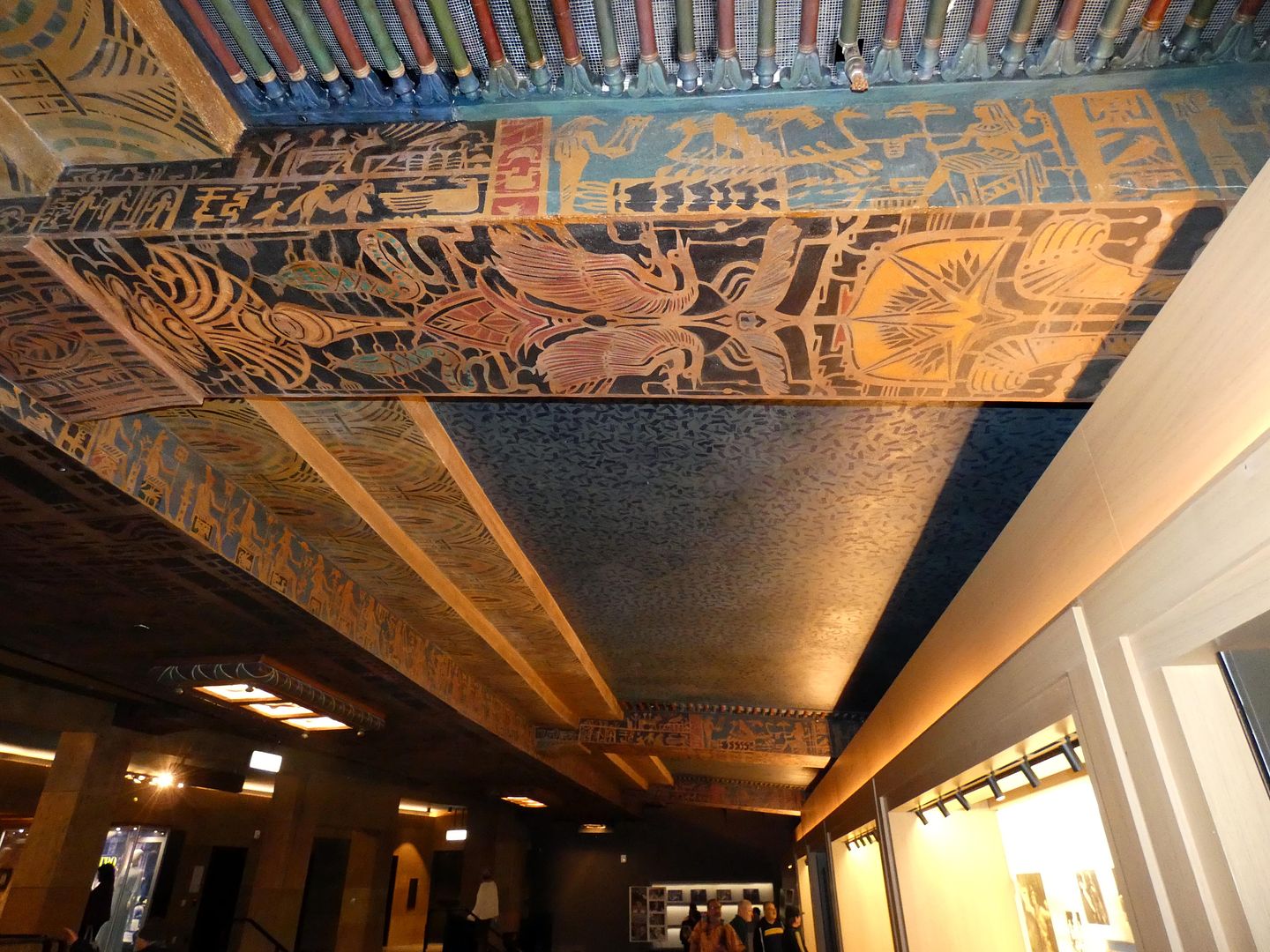
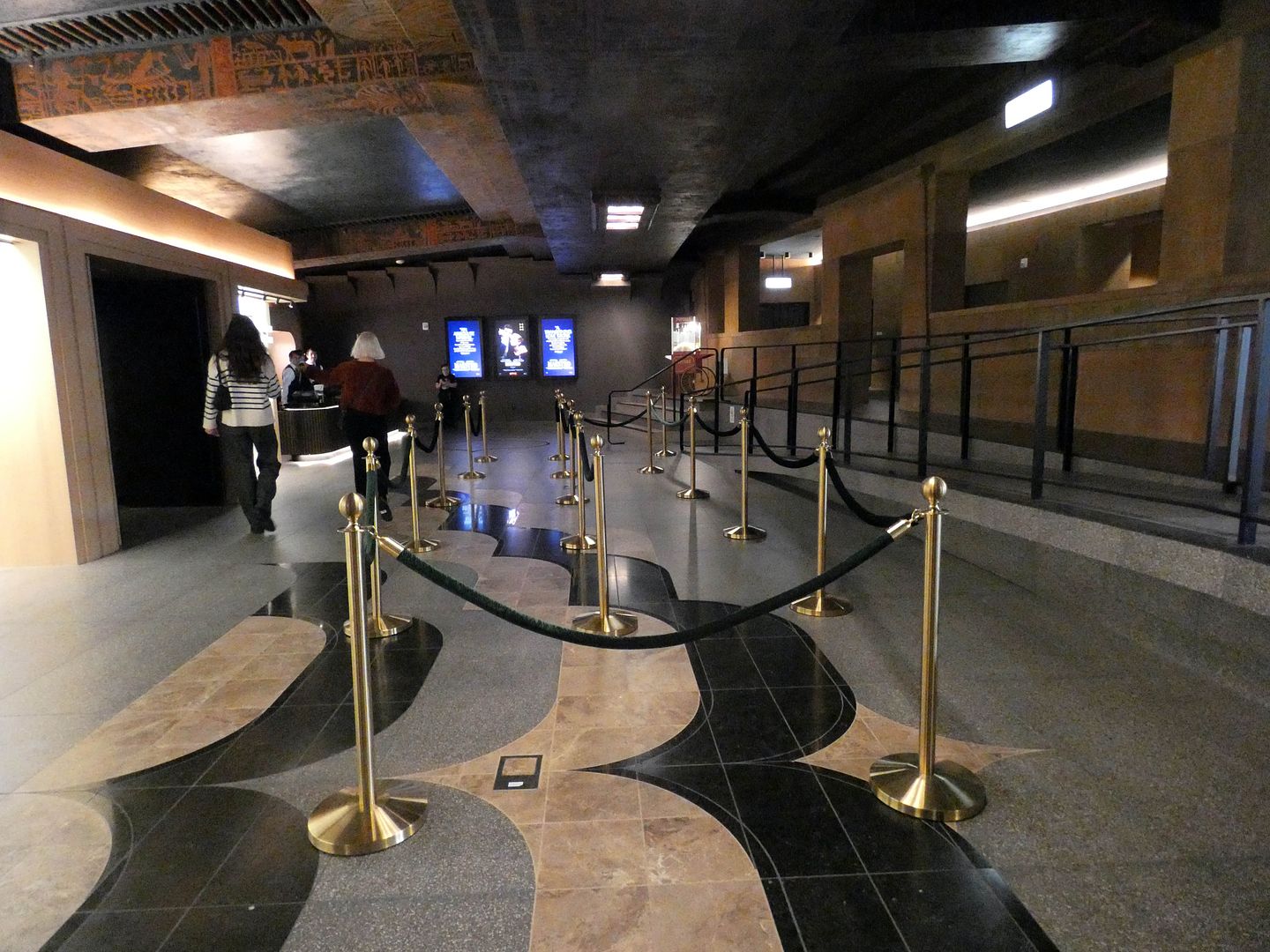


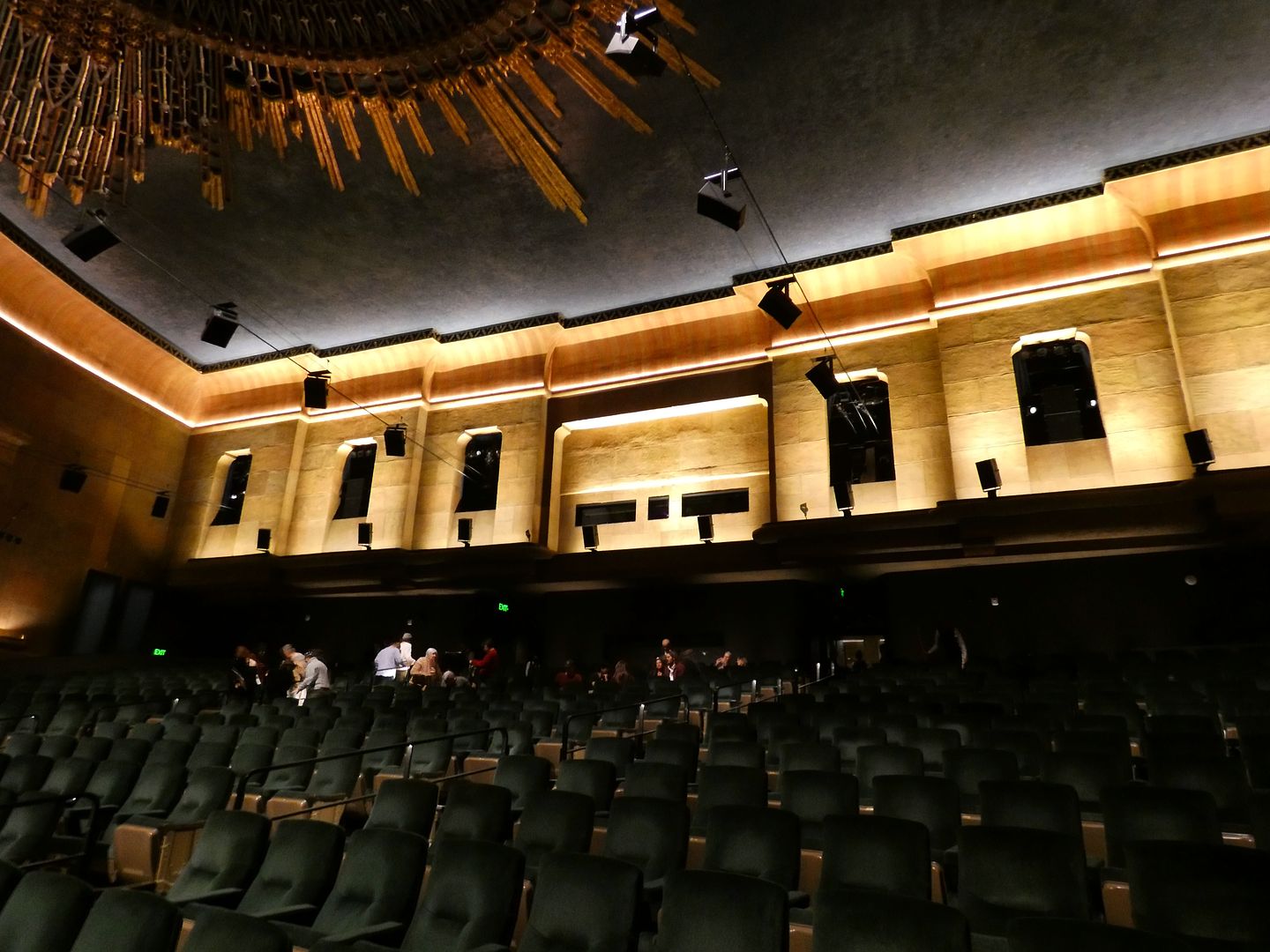
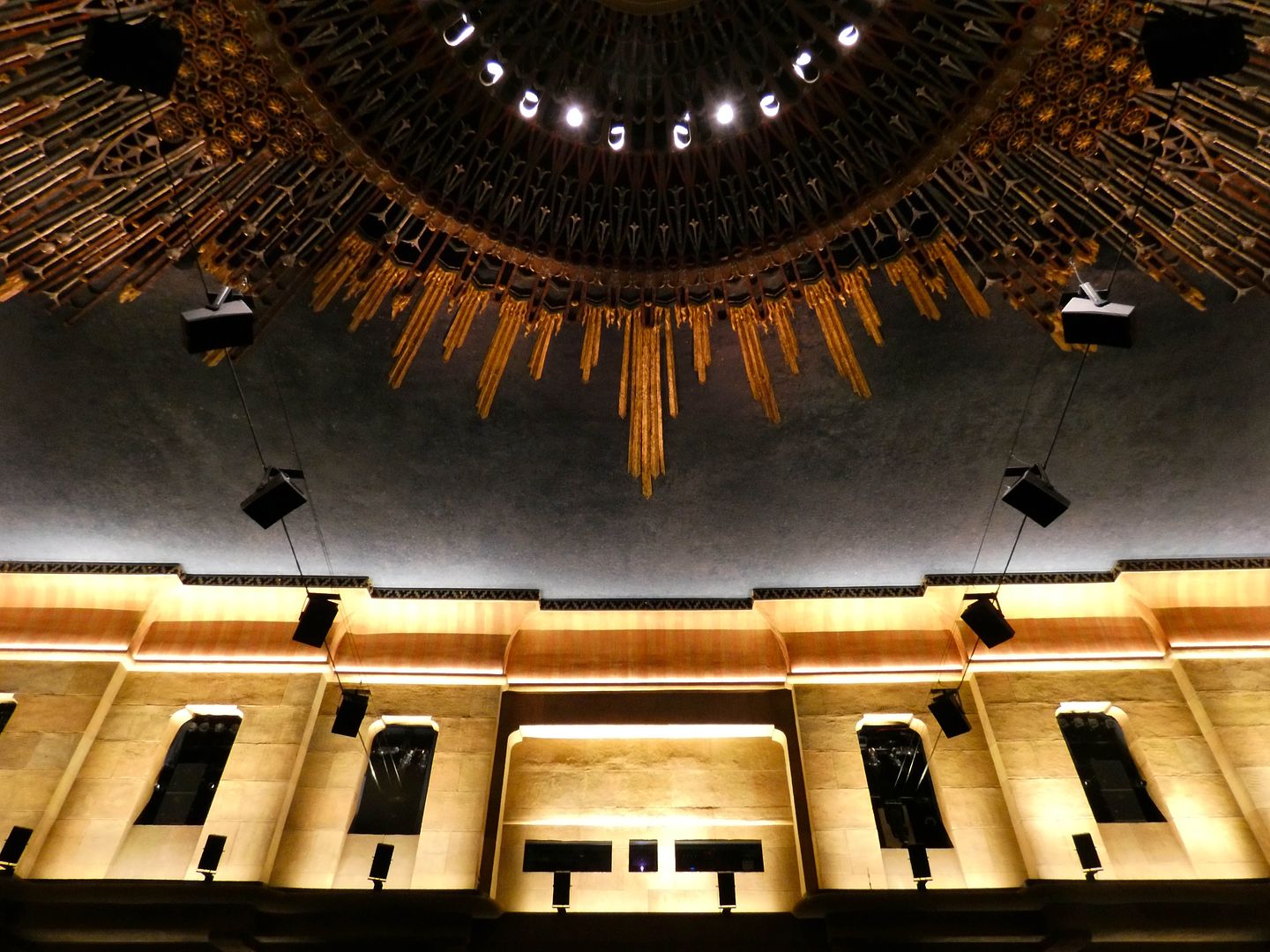
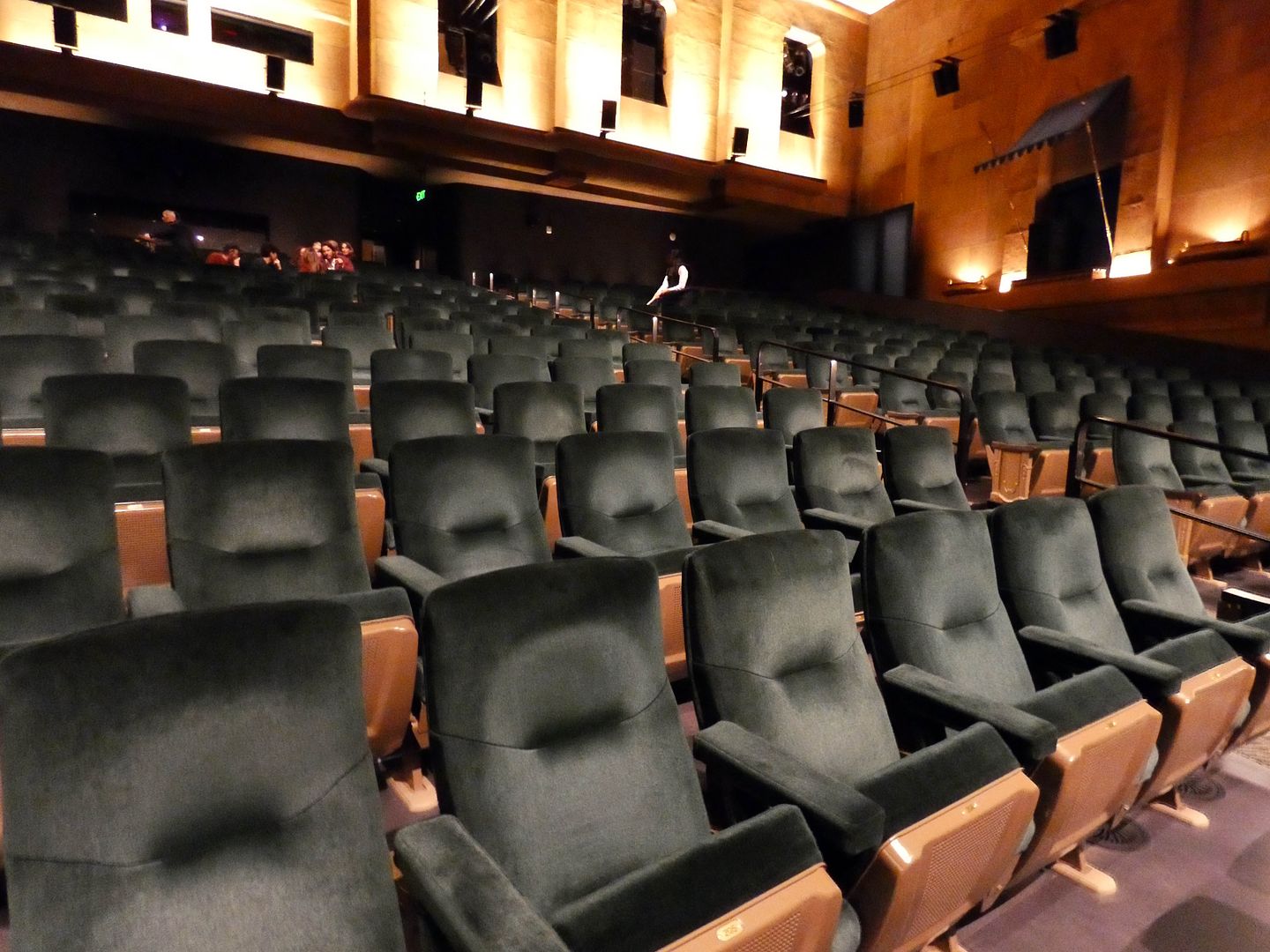
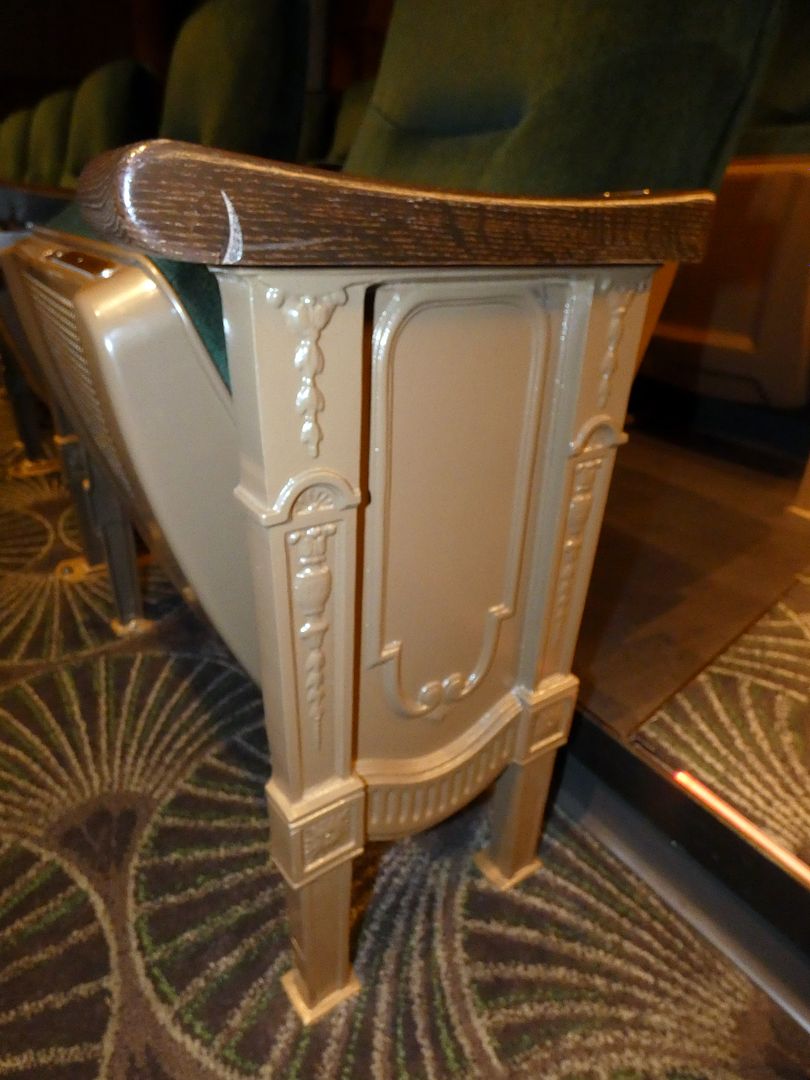

So, just a couple of weeks after it finally reopened from its multi-year renovation (which coincided with a COVID closure), I decided to go see a movie there on Thanksgiving Day.

The "American Cinematheque" sign that used to stretch across the entryway to the Egyptian forecourt is gone, but the vertical neon sign (a replica of one from the 1930s) has been restored and relit...

...with the addition of a Netflix "N" mounted to the wall underneath it (not shown here).

Netflix had promised to "restore" the theatre to an earlier time period—and for me, one of the victories of that effort is the repainted forecourt murals, which were previously peeling and weathered and really needed some TLC.

I'd been to that forecourt many times—not just for movie screenings, but also festivals and parties, like the 90th Anniversary masquerade ball that took place there in 2012.

But I'd never noticed how each of the painted figures on the columns were actually different—one in particular depicting the falcon-headed god Horus among the pharaohs.

The courtyard was always really dark—even during special events—so I was glad to see the new lighting scheme illuminating some of the fantastic restoration work.

You can actually see them better at night than during the day, when the sun might blow out the color scheme with too-harsh rays, or it might leave it cast in shadow.

And thankfully, it still looks textured and historic, not contemporary.

It's an anachronistic setting for a Netflix-themed gift shop, which now occupies the storefront to the left (which has experienced a revolving door of businesses, including, during my time in LA, the Hawaiian-themed Maui and Sons and Juice Factory).

And while the flashing lights illuminating the carved Egyptian faces might feel a little too too for visitors today, I like to think the theatre's founder, Sid Grauman, would've loved the showmanship in his "Temple of Dendur."

I hope Netflix or American Cinematheque plan to use this spacious setting—even more roomy, now that Netflix has removed the (1990s-era) planters—for special events that the public can go to, and not just for private premieres.

Past the colonnade, the box office and poster display cases in the entrance portico are basically the same as they were before (but again, better lit)...

...while the inside entryway is brand-new off the bat.

Netflix's renovation included reversing some of the updates and renovations that were done after the Egyptian had been severely damaged in the 1994 Northridge earthquake—like the carving out of the 77-seat Steven Spielberg screening room, which has now been removed.

Among the additions are an interpretive display of the theatre's history and origins of its decorative elements.

The lobby's painted, beamed ceilings and ceiling lighting fixtures are intact, dating back to the time when this was actually the rear of auditorium seating

...while the concession stand is now on the right side of the auditorium doors, alongside new, brighter flooring materials.

I got a kick out of the Egyptian-themed popcorn buckets...

...and custom branded chocolate bars for sale.

Inside the auditorium, the balcony was demolished, and the dark acoustic panels that covered the walls have been removed.

There's a new lighting scheme that really illuminates the back wall (looking towards the projection booth, which is equipped for 35MM, 70MM, and even nitrate).

One hundred seats were removed from the 1998 version, making the auditorium feel even smaller...

...and although the theatre seats themselves are new, they have a bit of a vintage feel.
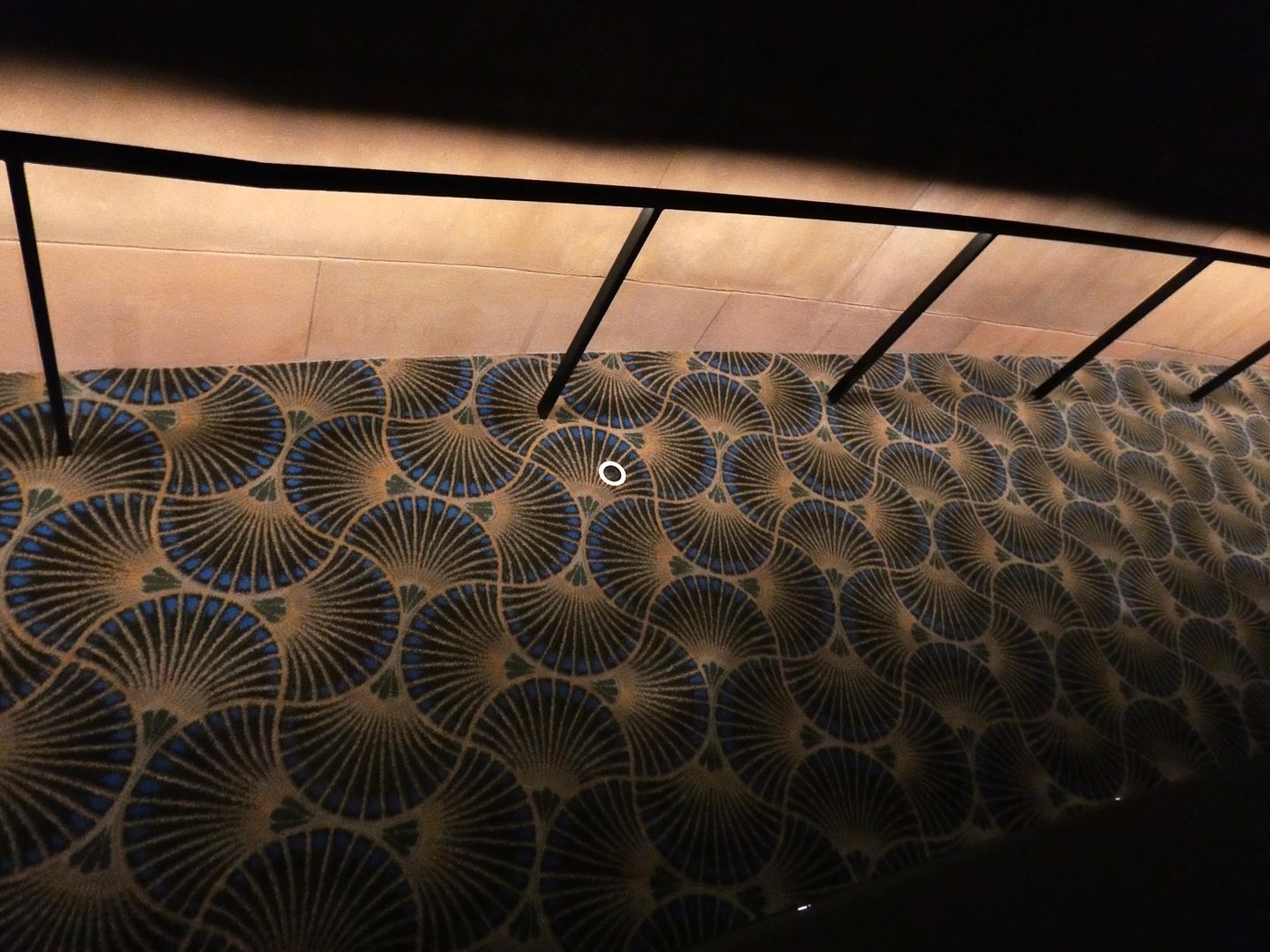
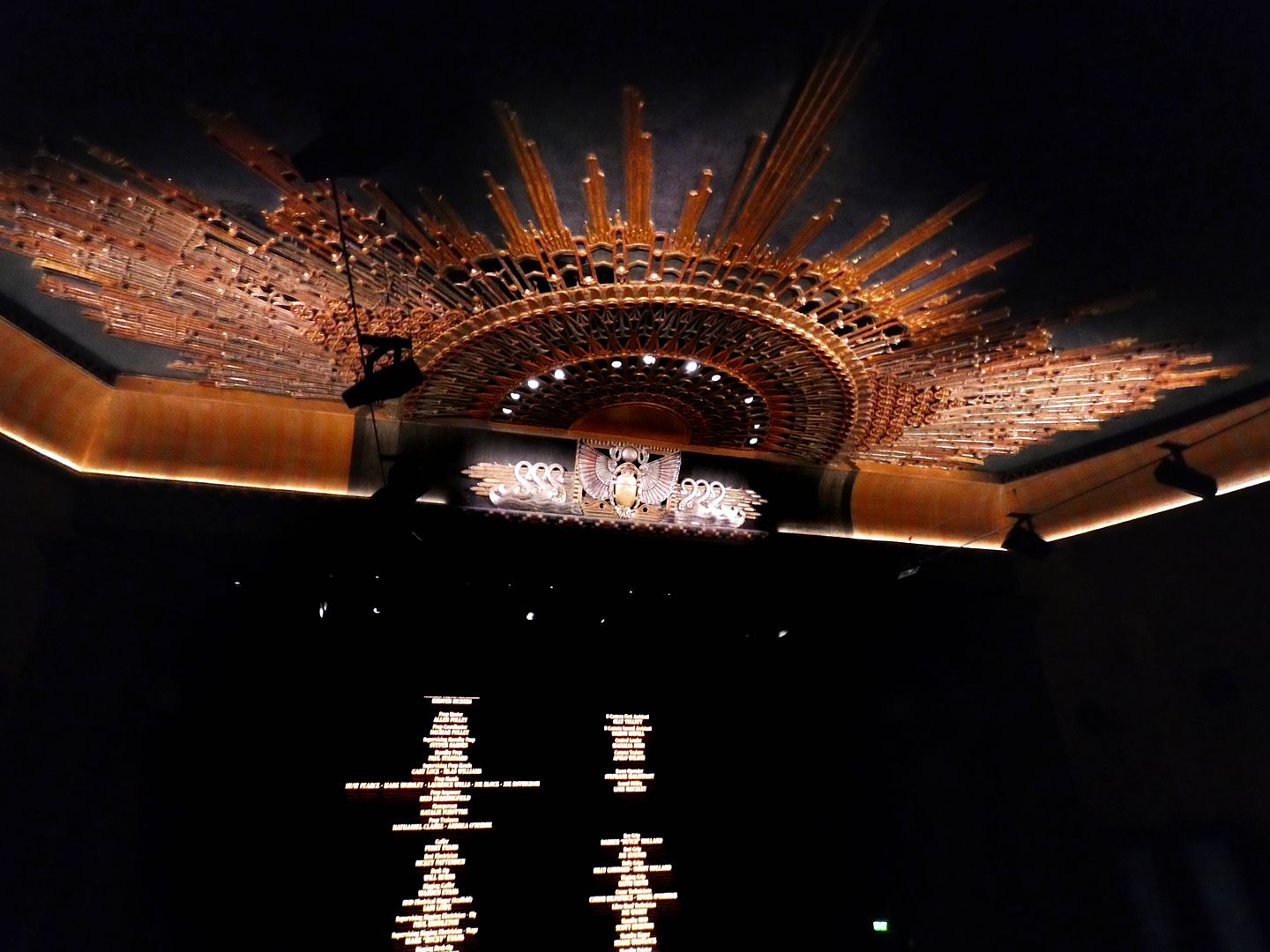

The carpeting is new, too—and features a stylized papyrus pattern suitable for the Art Deco era of the theatre.

And the pièce de résistance—the ceiling ornamentation, including the sunburst design and a scarab. The flat ceiling that surrounds the sunburst is no longer that bright blue.
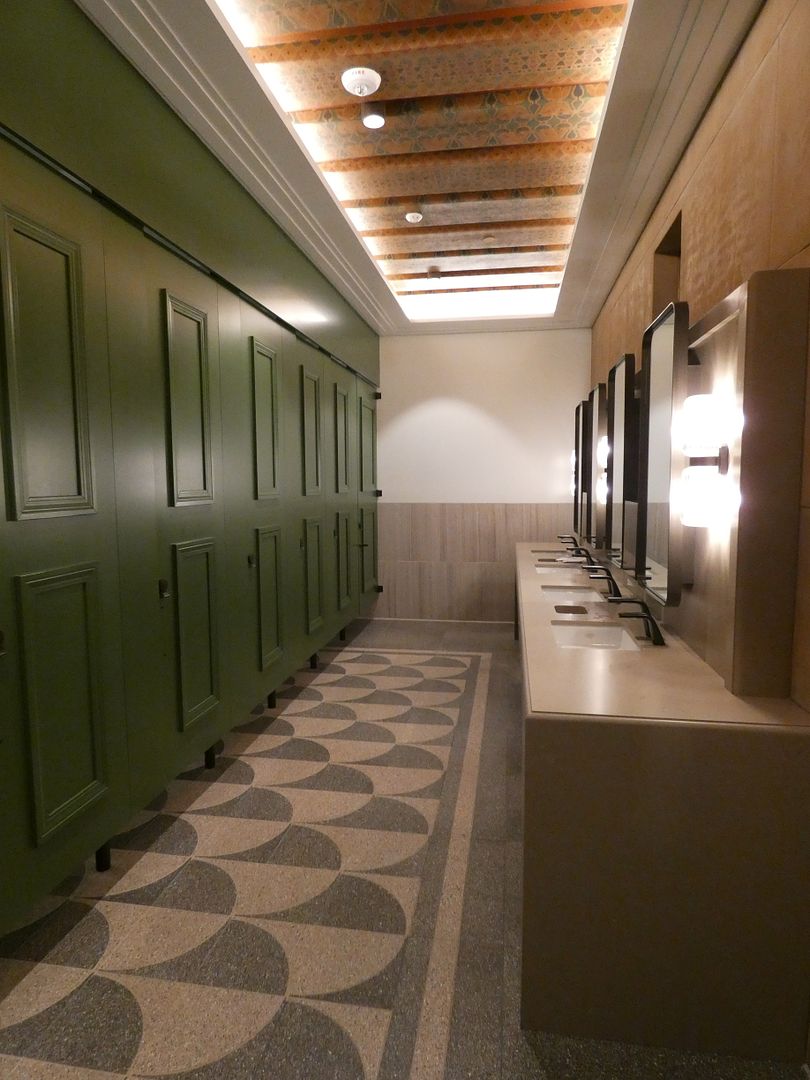

And while the ladies' room is pretty modern, I was glad to see the plaster ceiling detail preserved in a kind of window with inset lighting. But the bathroom itself feels much smaller than it was pre-Netflix.
Click here for photos of the 100th anniversary party for the Egyptian at Hollywood Heritage's Lasky-DeMille Barn.
Related Posts:

No comments:
Post a Comment